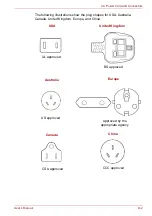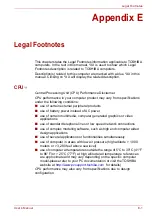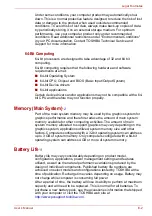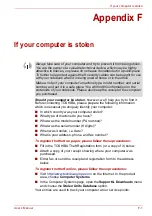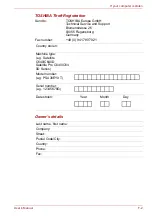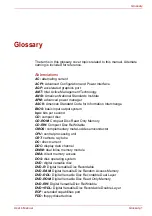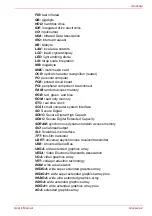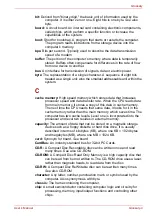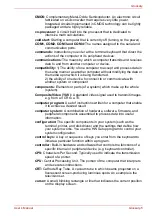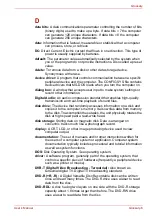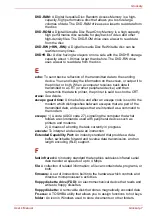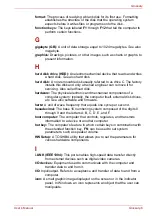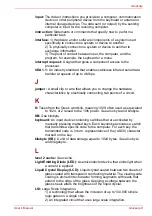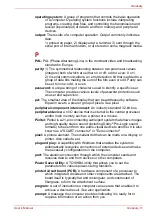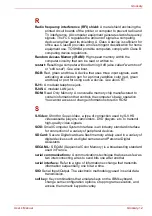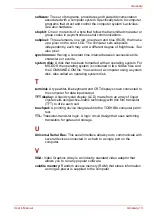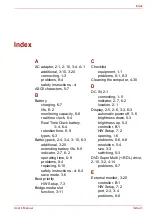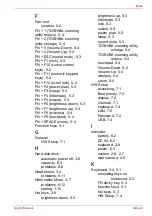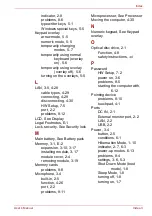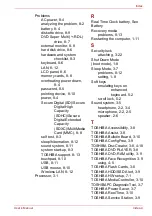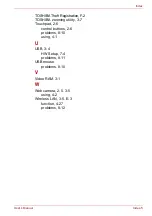
User’s Manual
Glossary-8
Glossary
format:
The process of readying a blank disk for its first use. Formatting
establishes the structure of the disk that the operating system
expects before it writes files or programs onto the disk.
function keys:
The keys labeled
F1
through
F12
that tell the computer to
perform certain functions.
G
gigabyte (GB):
A unit of data storage equal to 1024 megabytes.
See also
megabyte.
graphics:
Drawings, pictures, or other images, such as charts or graphs, to
present information.
H
hard disk drive (HDD):
An electromechanical device that reads and writes
a hard disk.
See also
hard disk.
hard disk:
A non-removable disk usually referred to as drive C. The factory
installs this disk and only a trained engineer can remove it for
servicing. Also called fixed disk.
hardware:
The physical electronic and mechanical components of a
computer system: typically, the computer itself, external disk drives,
etc.
See also
software and firmware.
hertz:
A unit of wave frequency that equals one cycle per second.
hexadecimal:
The base 16 numbering system composed of the digits 0
through 9 and the letters A, B, C, D, E, and F.
host computer:
The computer that controls, regulates, and transmits
information to a device or another computer.
hot key:
The computer’s feature in which certain keys in combination with
the extended function key,
FN
, can be used to set system
parameters, such as speaker volume.
HW Setup:
A TOSHIBA utility that allows you to set the parameters for
various hardware components.
I
i.LINK (IEEE1394):
This port enables high-speed data transfer directly
from external devices such as digital video cameras.
I/O devices:
Equipment used to communicate with the computer and
transfer data to and from it.
I/O:
Input/output. Refers to acceptance and transfer of data to and from a
computer.
icon:
A small graphic image displayed on the screen or in the indicator
panel. In Windows, an icon represents an object that the user can
manipulate.

